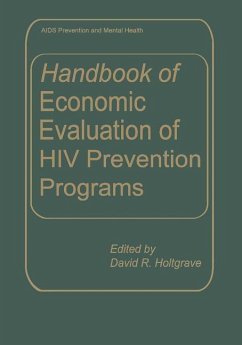Globally, action to prevent HIV spread is inadequate. Over 16,000 new infections occur every day. Yet we are not helpless in the face of disaster, as shown by the rich prevention experience analyzed in this valuable new compendium. "Best pr- tice" exists-a set of tried and tested ways of slowing the spread of HIV, of persuading and enabling people to protect themselves and others from the virus. Individually, features of best practice can be found almost everywhere. The tragedy, on a world scale, is that prevention is spotty, not comprehensive; the measures are not being applied on anywhere near the scale needed, or with the right focus or synergy. The national response may concentrate solely on sex workers, for example. Elsewhere, efforts may go into school education for the young, but ignore the risks and vulnerability of men who have sex with men. Action may be patchy geographically. AIDS prevention may not benefit from adequate commitment from all parts and sectors of society, compromising the sustainability of the response. In some countries matters are still worse-there is still hardly any action at all against AIDS and scarcely any effort to make HIV visible. It is no wonder that the epidemic is still emerging and in some places is altogether out of control.
`This is a highly recommended book for all academic and medical libraries. it should be read by anyone who is administering any HIV prevention program.'
AIDS Book Review Journal
`This volume provides a practical, accessible compendium of HIV prevention strategies implemented in developing countries, including accounts of the difficulties encountered and the degree of success achieved. The book also offers specific tools and tangible hope for reducing the impact of the epidemic in regions where combination therapies are inaccessible.'
American Journal of Public Health, 89:12 (1999)
`Preventing HIV in Developing Countries provides an up-to-date compendium of projects designed to reduce HIV transmission among a variety of high-risk populations in several countries. Any progress in making a serious dent in the HIV crisis that disproportionally affects the developing world is in part dependent on sharing the lessons learned. This volume provides an excellent foundation. It is written in a clear style, which makes it accessible to a variety of audiences. It is not a how-to-do-it manual, but provides an important shortcut to essential information that s otherwise difficult to obtain.'
Contemporary Psychology APA Review of Books, 46:5 (2001)
AIDS Book Review Journal
`This volume provides a practical, accessible compendium of HIV prevention strategies implemented in developing countries, including accounts of the difficulties encountered and the degree of success achieved. The book also offers specific tools and tangible hope for reducing the impact of the epidemic in regions where combination therapies are inaccessible.'
American Journal of Public Health, 89:12 (1999)
`Preventing HIV in Developing Countries provides an up-to-date compendium of projects designed to reduce HIV transmission among a variety of high-risk populations in several countries. Any progress in making a serious dent in the HIV crisis that disproportionally affects the developing world is in part dependent on sharing the lessons learned. This volume provides an excellent foundation. It is written in a clear style, which makes it accessible to a variety of audiences. It is not a how-to-do-it manual, but provides an important shortcut to essential information that s otherwise difficult to obtain.'
Contemporary Psychology APA Review of Books, 46:5 (2001)
`This is a highly recommended book for all academic and medical libraries. it should be read by anyone who is administering any HIV prevention program.'
AIDS Book Review Journal
`This volume provides a practical, accessible compendium of HIV prevention strategies implemented in developing countries, including accounts of the difficulties encountered and the degree of success achieved. The book also offers specific tools and tangible hope for reducing the impact of the epidemic in regions where combination therapies are inaccessible.'
American Journal of Public Health, 89:12 (1999)
`Preventing HIV in Developing Countries provides an up-to-date compendium of projects designed to reduce HIV transmission among a variety of high-risk populations in several countries. Any progress in making a serious dent in the HIV crisis that disproportionally affects the developing world is in part dependent on sharing the lessons learned. This volume provides an excellent foundation. It is written in a clear style, which makes it accessible to a variety of audiences. It is not a how-to-do-it manual, but provides an important shortcut to essential information that s otherwise difficult to obtain.'
Contemporary Psychology APA Review of Books, 46:5 (2001)
AIDS Book Review Journal
`This volume provides a practical, accessible compendium of HIV prevention strategies implemented in developing countries, including accounts of the difficulties encountered and the degree of success achieved. The book also offers specific tools and tangible hope for reducing the impact of the epidemic in regions where combination therapies are inaccessible.'
American Journal of Public Health, 89:12 (1999)
`Preventing HIV in Developing Countries provides an up-to-date compendium of projects designed to reduce HIV transmission among a variety of high-risk populations in several countries. Any progress in making a serious dent in the HIV crisis that disproportionally affects the developing world is in part dependent on sharing the lessons learned. This volume provides an excellent foundation. It is written in a clear style, which makes it accessible to a variety of audiences. It is not a how-to-do-it manual, but provides an important shortcut to essential information that s otherwise difficult to obtain.'
Contemporary Psychology APA Review of Books, 46:5 (2001)








